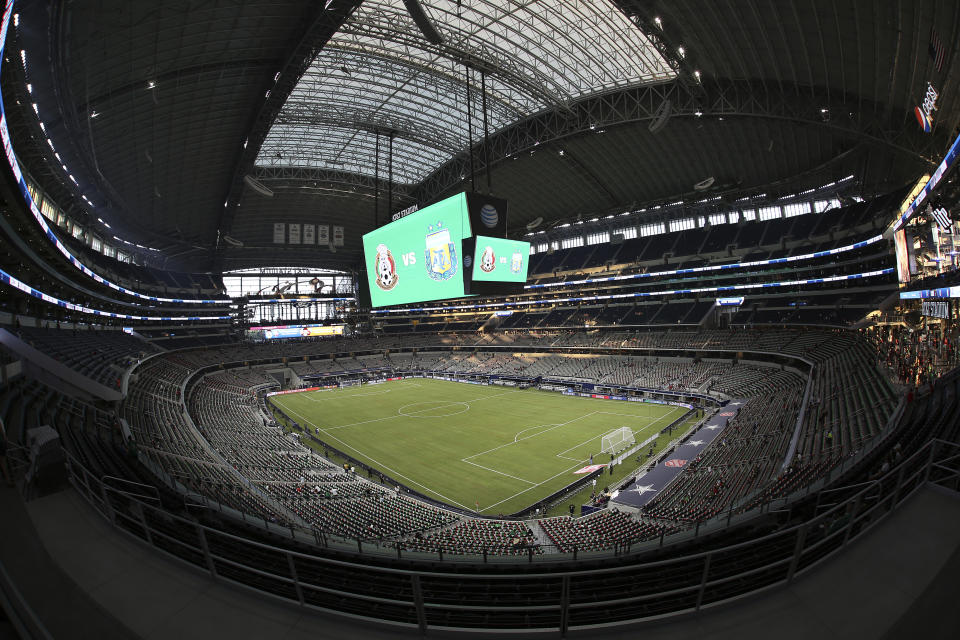DOHA, Qatar — A men’s World Cup era ended Sunday with the greatest final ever played. It was a dichotomous era of rampant corruption, but also of GOATs and commercial growth. Even as the U.S. Department of Justice exposed FIFA, the global soccer governing body’s business boomed. Revenue more than quadrupled from 1998, when the first 32-team World Cup was staged, to 2022. The tournament and its brand, despite relentless controversy surrounding Qatar, are as popular as ever.
And yet, FIFA is changing it. The 2026 edition will come to the United States, Canada and Mexico with 48 teams, a novel format, and promises of a “massive” impact on soccer in North America.
FIFA’s first order of business, though, will be figuring out what, exactly, the new format will look like.
How is the World Cup changing in 2026?
Expansion from 32 to 48 teams has left organizers with a dilemma. FIFA initially settled on 16 groups of three, with two of each three advancing to a 32-team knockout stage. But amid growing public pushback, officials have acknowledged that the proposed scheme would deflate the group stage.
“I think we have to revisit, or at least re-discuss the format,” FIFA president Gianni Infantino said at a news conference Friday.
The likely solution would be 12 groups of four, with the top eight third-place teams advancing alongside the top two. A better solution would be 12 groups of four with only the top two advancing, and the eight best group winners getting byes to the Round of 16. But it’s unclear if FIFA has considered the latter option.
The 37-member, all-powerful FIFA Council will decide on and finalize the format sometime in 2023.
The 2026 World Cup will be massive in every possible way
Expansion means more games. North America, meanwhile, means bigger stadiums, sponsorship bonanzas and influx of visitors unlike any the World Cup has seen before. Infantino said FIFA expects at least 5 million fans from other continents to descend on the U.S., Canada and Mexico, in addition to the millions of North American fans who’ll go to games or partake in festivities.
The 1994 tournament hosted by the U.S., the last with 24 teams, still holds the World Cup record for total attendance. FIFA’s World Cup chief, Colin Smith, said in June that 2026 will smash that record, and could even double the previous mark.
“2026 will be much, much, much bigger,” Infantino agreed. “I think this part of the world doesn’t realize what’ll happen here in 2026. I mean, these three countries will be upside down. The world will be invading Canada, Mexico and the United States. And they will be invaded by a big wave of joy and happiness.”


Accordingly, FIFA has budgeted $11 billion in revenue for the 2026 cycle, a sizable jump from the $7.5 billion it made over the last four years. Infantino cited broadcast and sponsorship contracts, ticket sales and hospitality packages as reasons for the jump.
He also said: “We are convinced that football will be booming in North America, because we will start working immediately, as of the 19th of December, when it comes to the [next] men’s [World Cup]. … We are convinced that [soccer] will become the No. 1 sport in North America. Maybe the No. 2 to start with, and then with time — we are convinced of the power of our game.”
Where will 2026 World Cup games be held?
FIFA chose 16 North American cities, including 11 in the U.S., to host games. Those cities (and stadiums) are:
-
New York/East Rutherford, N.J. (MetLife Stadium)
-
Philadelphia (Lincoln Financial Field)
-
Boston/Foxborough, Mass. (Gillette Stadium)
-
Miami (Hard Rock Stadium)
-
Atlanta (Mercedes-Benz Stadium)
-
Houston (NRG Stadium)
-
Dallas/Arlington, Texas (AT&T Stadium)
-
Kansas City, Mo. (Arrowhead Stadium)
-
Los Angeles/Inglewood, Calif. (SoFi Stadium)
-
San Francisco/Santa Clara, Calif. (Levi’s Stadium)
-
Seattle (Lumen Field)
-
Mexico City (Estadio Azteca)
-
Monterrey (Estadio BBVA)
-
Guadalajara (Estadio Akron)
-
Toronto (BMO Field)
-
Vancouver (BC Place)
FIFA has not said how many matches each city will host, but the North American bid committee originally proposed a minimum of five per U.S. city, including at least two knockout-round games each.
When will we know the full schedule?
FIFA vice president Victor Montagliani said in June that a schedule shell was “being worked on.” It could be released in late 2023 or early 2024, and should reveal both the dates and locations of every game from the opener(s) through the final.
Two sources told Yahoo Sports earlier this year that the two favorites to host the final were AT&T Stadium in Texas and MetLife Stadium in New Jersey.
The full schedule, complete with teams and kickoff times, won’t be known until after qualifying and the World Cup draw, likely in December of 2025.
The tournament will likely begin in early June 2026.
Will the U.S., Canada and Mexico qualify automatically?
Yes. That isn’t quite 100% official, however, because the allocation of World Cup berths by confederation haven’t yet been confirmed, but the U.S., Canada and Mexico will qualify automatically.
All of that, and the qualification structures for each confederation, should be confirmed over the next year.
What will the USMNT look like by 2026?
The U.S. should be better than it was in 2022, and perhaps better than ever, for reasons explained here and here.


What will the 2026 World Cup’s problems be?
The 2022 World Cup was consumed, at least early on, by criticism of Qatar for its treatment of migrant workers and LGBTQ people. The 2026 tournament likely won’t be as controversial, but organizers are wary of a few potential issues:
-
Heat. Ironically, after all the outcry over Qatar’s climate, some U.S. cities will be hotter in the summer than Doha has been in November and December. Eight of the 16 North American cities regularly experience June temperatures in the 90s, and only three of those eight stadiums have roofs. Infantino indicated earlier this year that climate-proof venues could be candidates for afternoon games, while games at outdoor grounds will kick off in the evening. But heat could still impact the fan experience away from stadiums.
-
Guns. For all Qatar’s problems, it is a very safe country. The U.S. and Mexico, on the other hand, less so. FIFA can impose strict security at matches and official fan festivals, but it can’t control guns and ensure safety anywhere else if governments don’t.
-
Travel. Qatar’s size, in many ways, turned out to be a benefit. North America’s will be troublesome — and environmentally costly. It will be very difficult for fans to attend several matches at a reasonable price.
Is a 64-team World Cup in the future?
The men’s World Cup has now expanded three times in 44 years — roughly once every two decades. And there’s no reason to think it won’t expand again, to 64 teams, sometime around 2050.
More teams equals more money and more sporting growth. A 64-team field isn’t any more unwieldy than a 48-team field. It seems likely that the end game is a 64-team competition spread across entire regions or continents — i.e. South America, or South Asia, or North and West Africa.
When is the next Women’s World Cup?
It’s in — *checks calendar* — seven months!
The gap between Qatar and the 2023 Women’s World Cup in Australia and New Zealand, which kicks off on July 20, will be the shortest ever between the two tournaments
When will future World Cup hosts be decided?
FIFA decided last week that it will choose hosts for the 2027 Women’s World Cup and 2030 men’s World Cup in 2024. The following year, it will pick a host for the 2031 Women’s World Cup.
U.S. Soccer has said that it will bid for either the 2027 or 2031 women’s tournament.
